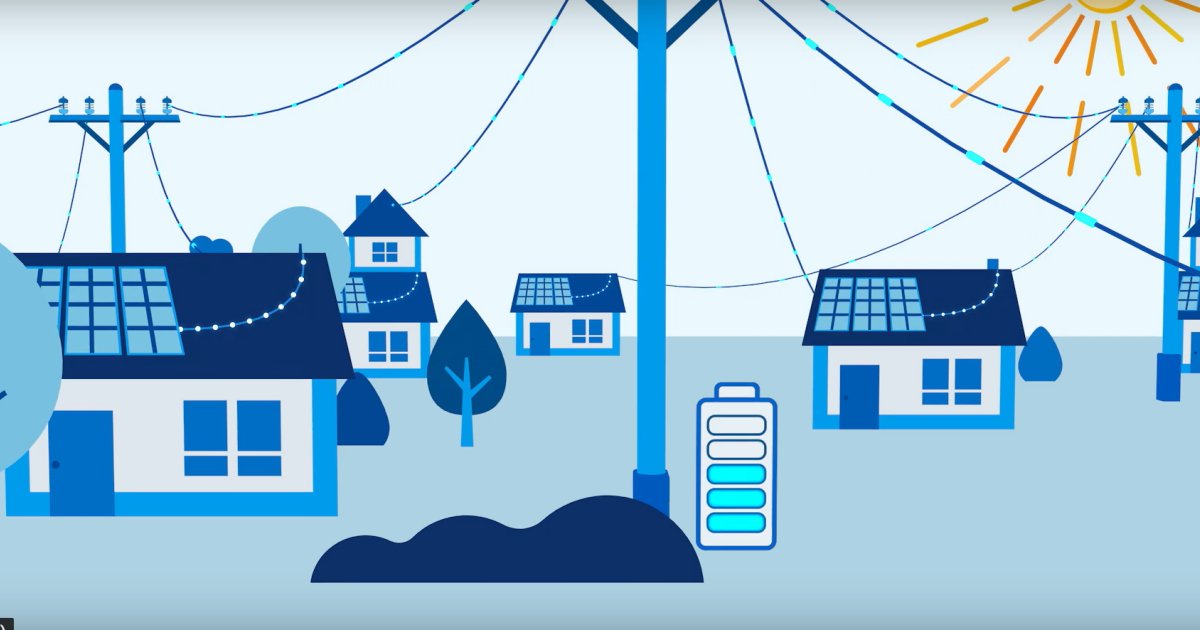A Victorian study has produced a guide to developing neighbourhood batteries as community assets.
Not everyone can afford (or may even want) a home battery, but neighbourhood batteries can help everyone benefit from renewable energy – whether they have solar panels installed or not.
Neighbourhood batteries generally charge up during the day when there is lower electricity demand and/or surplus solar electricity production, discharging in the evenings – or at other times when there’s an opportunity to make a buck.
Among the benefits and opportunities.
- Emissions reduction.1
- Helping to keep locally generated solar energy local.
- Supporting more solar power system installations within a neighbourhood.
- Improving local electricity supply reliability and resilience
- Helping to manage peak demand and peak solar electricity production.
- Generating income from wholesale energy trading.
These batteries can be owned by networks, communities, local government or other participants in the energy market.
There’s been a lot of chatter around community batteries, particularly since Federal Labor made them a focus in election promises and now- Federal Climate Change and Energy Minister Chris Bowen started pledging them to specific communities soon after.
Last year, Victorian distributed network service provider (DNSP) Powercor received funding from the Victorian Government’s Neighbourhood Battery Initiative to lead a feasibility study into community batteries. Powercor worked with fellow distributors CitiPower and United Energy along with a dozen councils, community energy and greenhouse alliances on the Electric Avenue Feasibility Study.
The study looked at regions across nearly two-thirds of Victoria in order to identify 30 preferred locations for neighbourhood batteries – one of those we mentioned recently is in Tarneit. Of the 30 preferred locations identified, 17 have the potential to be feasible based on their ability to address electricity distribution constraints and could collectively service more than 6,000 customers. 13 sites could support community objectives.
“The reality is with the scale and speed of the transformation towards a clean energy future, all of these types of neighbourhood battery projects are needed,” said Powercor Head of Network Strategy and Non-Network Solutions, Greg Hannan. “They perform a distinct function within a localised community which is quite different to the role of either household batteries or big batteries supplying larger populations, but certainly complementary.”
Community Batteries Make For Powerful Neighbours, But …
The study also revealed learnings, insights and ideas that may support other communities interested in a neighbourhood battery.
The conclusion notes neighbourhood battery projects are “highly contextual” – not easily scalable and the model used in one neighbourhood is not necessarily transferable to another. The design and implementation for each project will be specific to:
- the use case, such as existing network constraints needing to be fixed to enable more solar installations.
- the business model and ownership structure – who pays, and who reaps the financial benefits.
- the public/community impacts – aesthetics and land use. The report notes neighbourhood batteries could be as small as 30kW (so minimal land use), but up 5 megawatts capacity. Even at the upper end, it’s still a small physical footprint. But if open space is at a premium, that could create concerns and division within a community.
You read more on the insights in The Powerful Neighbours Report.
Footnotes
- Powercor notes more work needs to be done on defining how neighbourhood batteries contribute to reducing carbon emissions – and by how much. ↩


 RSS - Posts
RSS - Posts



Not sure the article helps people to make a decision about solar power or batteries.
One issue which comes to mind from your diagram is the power poles and the claim that it costs more to put cables under the ground than on ugly poles. You may want to pursue this Michael as it seems this is a yet another lie from the pollies protecting the fossil fuel system.
My contention is it should be much cheaper to put cables in the ground with the exception of going through cities. There was a recent story about Snowy Hydro running cables from the source to Canberra and the claim was again cost. Given that cables would be going through farming land I find this claim incredulous and would like to see a costing from a contractor. Farming equipment already uses chain trenchers which go down 1 metre and do hundreds of metres per day. I can’t see a 6 metre depth as being anything other than an extension of what already exists. Of course rock is another story but quarry equipment already has twin blades to cut sandstone for the landscaping industry and its fast as well.
This would be a great story for you Michael. Unless there’s something I’m missing it appears there’s no reason for refusing to put cables in the ground. Maintenance costs (replacement poles, branches over wires in storms, etc) would also be almost absent. Over to you. Lets put it up to the powers that be to justify what appears to dishonesty.